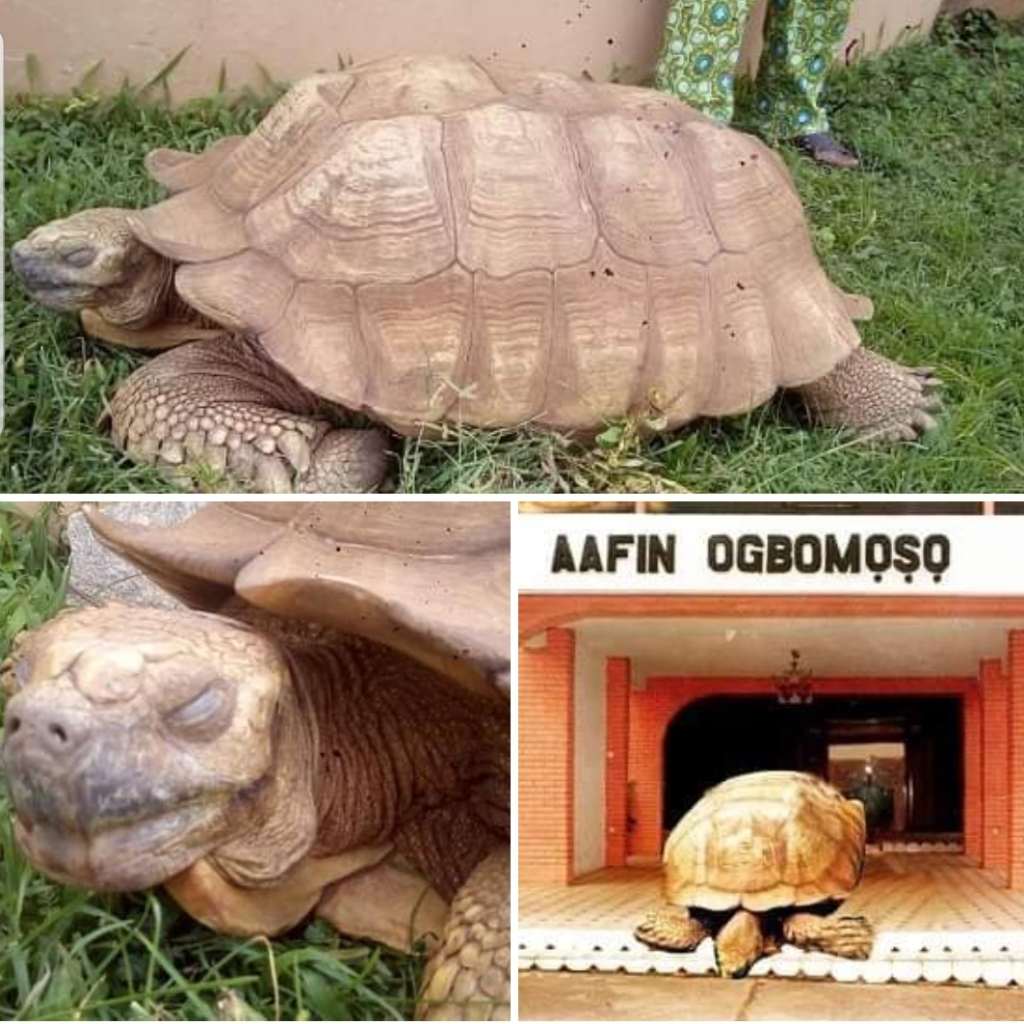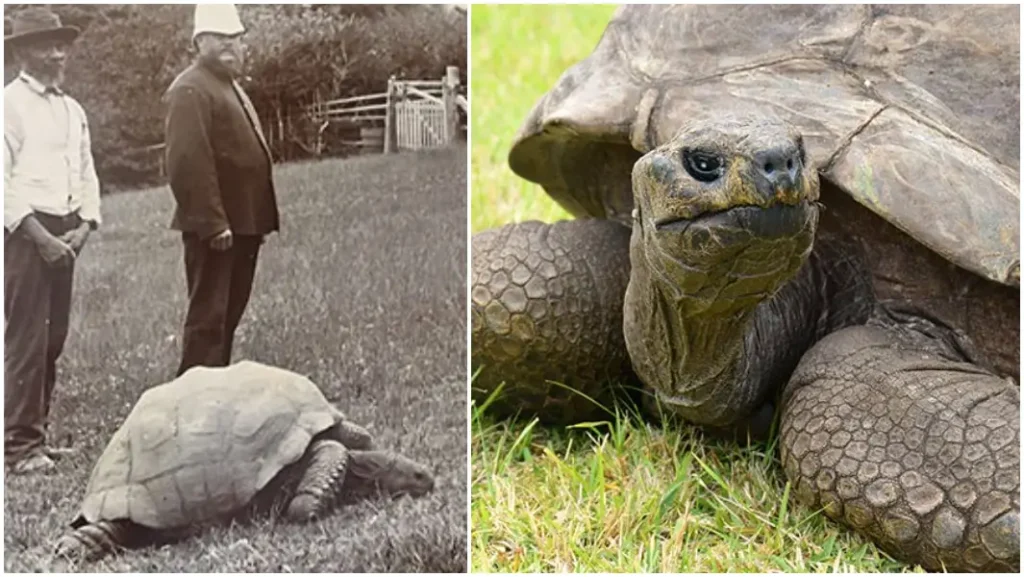Difference Between Tortoise, Turtle And Terrapin?
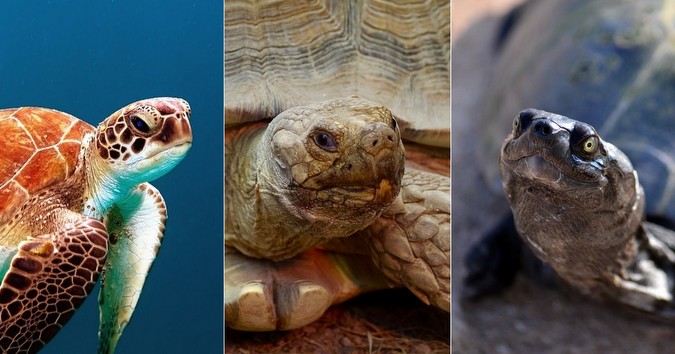
Introduction
Turtles, tortoises, and terrapins are all reptiles of the order Testudines, but they exhibit distinct differences in habitat, behavior, and physical characteristics. Turtles are adaptable and can be found in both aquatic and terrestrial environments, with streamlined bodies and webbed feet for swimming. Tortoises are exclusively terrestrial, dwelling in arid regions, and have dome-shaped shells and column-like feet adapted for walking on land. Terrapins, on the other hand, are semi-aquatic, splitting their time between water and land, and typically inhabit freshwater or brackish environments. These distinctions in habitat and physiology contribute to variations in diet, behavior, and conservation needs among these fascinating reptiles.
Turtles
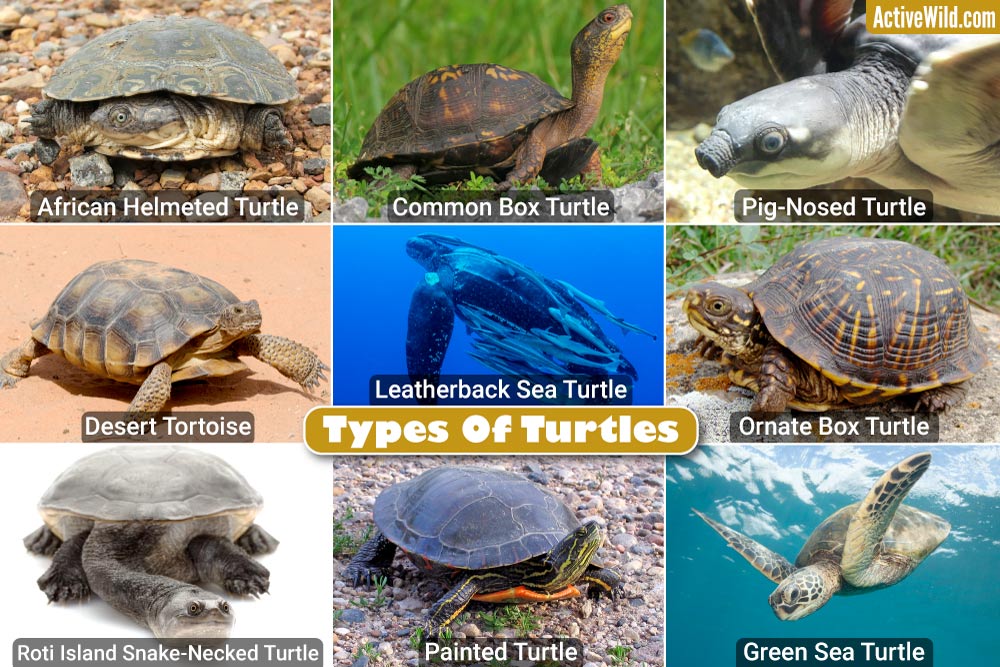
Habitat
Turtles are adapted to both land and water. They are often found in a variety of environments, including ponds, rivers, lakes, and oceans.
Physical Characteristics
Turtles typically have a streamlined body and webbed feet, which are well-adapted for swimming. Their shells are often flatter and more streamlined.
Behavior
Turtles exhibit a range of behaviors depending on the species, but they are generally comfortable both in water and on land. Some species migrate long distances.
Feeding Habits
Diet
Aquatic Turtles: Species like sliders, painted turtles, and map turtles are primarily aquatic and feed on a diet that includes aquatic plants, small fish, insects, worms, and amphibians.
Sea Turtles: Sea turtles, such as green turtles and loggerheads, are herbivores or omnivores. They eat seagrasses, algae, jellyfish, and sometimes crustaceans.
Geographic Distribution
Turtles are found worldwide, and their distribution is not limited to specific types of habitats.
Species
There are more than 350 species. New species are still being discovered, particularly in regions with limited scientific exploration.
Conservation status
The conservation status of turtle species varies widely. Some species, especially sea turtles, face significant threats such as habitat destruction, accidental capture in fishing gear, and climate change. Various sea turtle species, such as the Kemp’s ridley turtle, leatherback turtle, and hawksbill turtle, are listed as endangered or critically endangered. Conservation efforts often focus on protecting nesting sites, implementing fishing gear modifications, and reducing pollution.
Smallest and Largest Species
Smallest Turtle:
Speckled Padloper Tortoise (Homopus signatus): This tiny tortoise, native to South Africa, is considered the smallest turtle species. Adults typically measure around 3 to 4 inches (7.6 to 10.2 cm) in length.

Largest Turtle:
Leatherback Sea Turtle (Dermochelys coriacea): The leatherback sea turtle holds the title for the largest turtle species. Adult leatherbacks can reach impressive lengths of up to 7 feet (2.13 meters) and weigh as much as 2,000 pounds (900 kilograms). These turtles have a distinctive leathery shell instead of a hard, bony one.
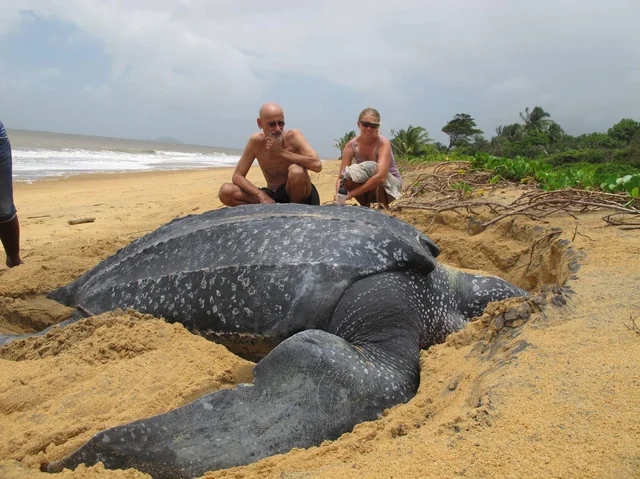
Tortoises
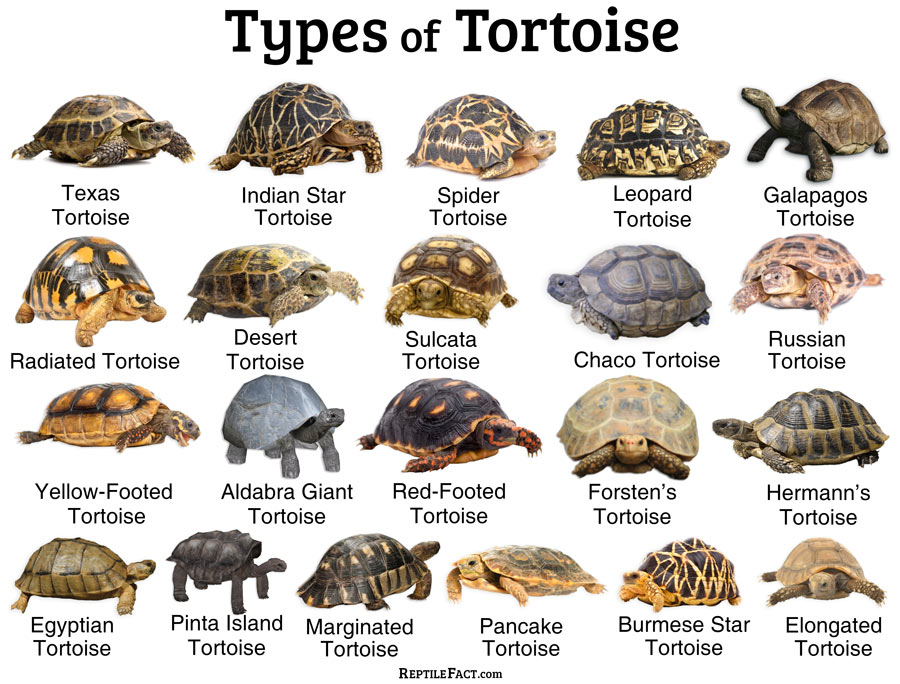
Habitat
Tortoises are exclusively terrestrial and prefer dry, arid regions. They are commonly found in grasslands, deserts, and scrublands.
Physical Characteristics
Tortoises have a more dome-shaped shell that is adapted for protection against predators in their terrestrial habitats. Their feet are column-like and adapted for walking on land.
Behavior
Tortoises are known for their slow and steady movements on land. They dig burrows to escape extreme temperatures and often graze on vegetation.
Feeding Habits
Diet
Tortoises are primarily herbivores, and their diet consists mainly of plant matter such as grasses, leaves, flowers, and fruits. Some tortoise species are adapted to arid environments and can consume succulent plants to obtain water.
Geographic Distribution
Tortoises are often associated with dry and arid regions, such as those in Africa, Asia, and the Americas.
Species
There are around 50 species of tortoises. They are primarily found in Africa, Asia, the Americas, and some oceanic islands.
Conservation status
Some well-known tortoise species, such as the Galápagos tortoise and the ploughshare tortoise, are listed as endangered or critically endangered. Conservation measures involve habitat protection, captive breeding programs, and efforts to combat illegal trade.
Smallest and Largest Species
Smallest Tortoise:
Speckled Padloper Tortoise (Homopus signatus): In addition to being the smallest turtle, the speckled padloper tortoise is also the smallest tortoise species.
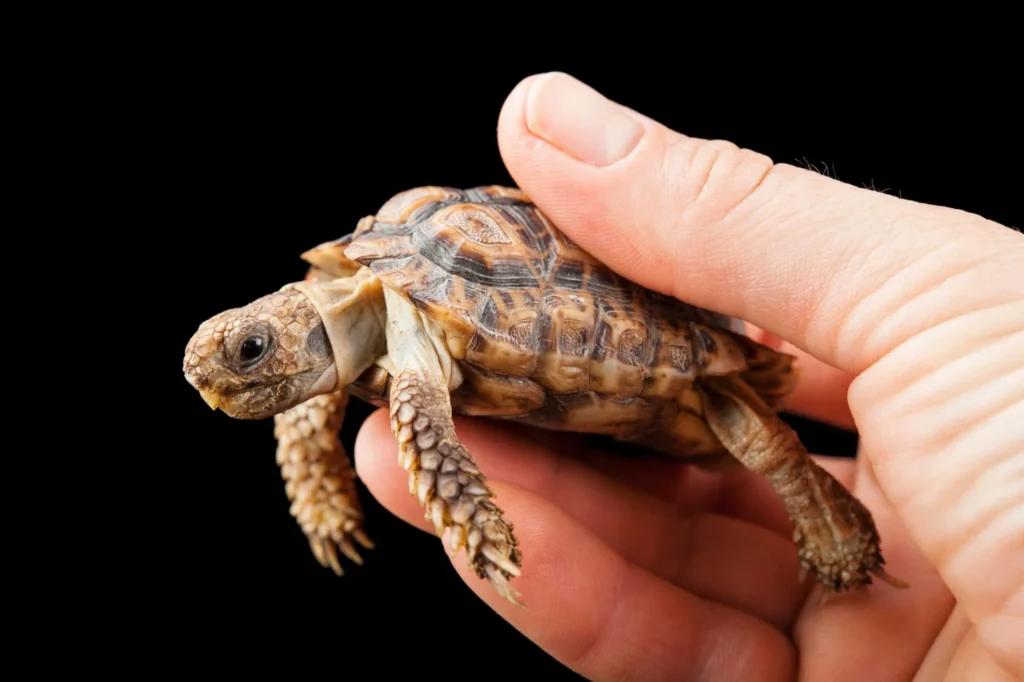
Largest Tortoise:
Galápagos Tortoise (Chelonoidis nigra): The Galápagos tortoise, particularly individuals from the islands of Española and Santa Cruz, holds the record for being the largest tortoise species. Some individuals have exceeded 5 feet (1.5 meters) in length and weighed over 900 pounds (400 kilograms).
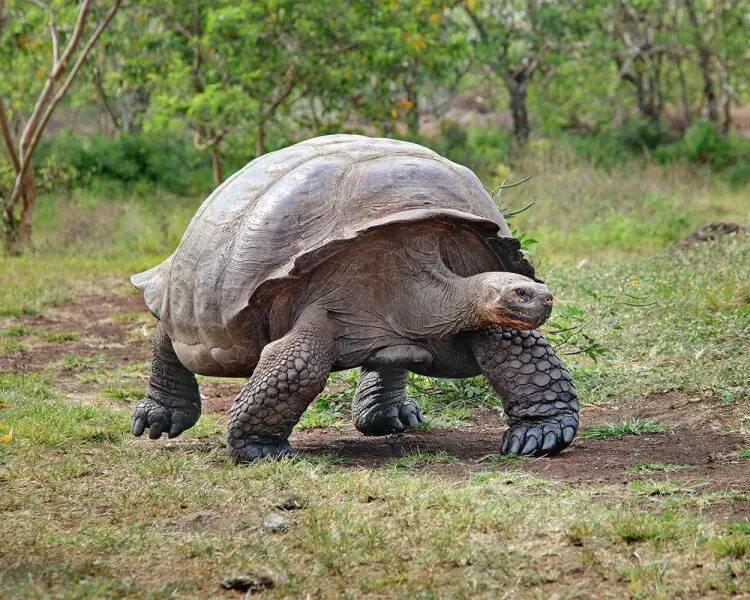
Terrapins
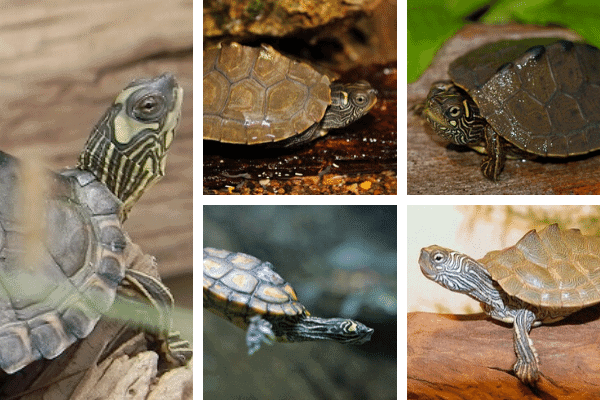
Habitat
Terrapins are semi-aquatic, meaning they spend time both in water and on land. They are usually found in brackish or freshwater habitats, such as marshes, swamps, and estuaries.
Physical Characteristics
Terrapins have a shell that is well-adapted for both swimming and protection. They have webbed feet and are generally more agile in the water than tortoises.
Behavior
Terrapins are good swimmers and are often seen basking on rocks or logs. They may venture onto land to lay eggs but spend a significant amount of time in the water.
Feeding Habits
Diet
Terrapins have a more varied diet as they are semi-aquatic. Their diet may include aquatic plants, small fish, insects, crustaceans, and amphibians. They are opportunistic feeders, adapting to the resources available in their freshwater or brackish habitats.
Geographic Distribution
Terrapins are commonly found in coastal areas, estuaries, and freshwater habitats, with some species inhabiting brackish waters.
Species
There are about 13 recognized species of terrapins. Terrapins are often associated with brackish or freshwater environments.
Conservation status
Terrapins face threats such as habitat loss, pollution, and road mortality. The conservation status varies among species. For example, the diamondback terrapin is listed as near-threatened, primarily due to habitat degradation and incidental capture. Conservation strategies include habitat restoration, protection, and research to understand and mitigate threats.
Smallest and Largest Species
Smallest Terrapin:
Bog Turtle (Glyptemys muhlenbergii): The bog turtle is considered one of the smallest North American turtles, though it is more commonly referred to as a turtle rather than a terrapin. Adults are typically 3 to 4.5 inches (7.6 to 11.4 cm) in length.
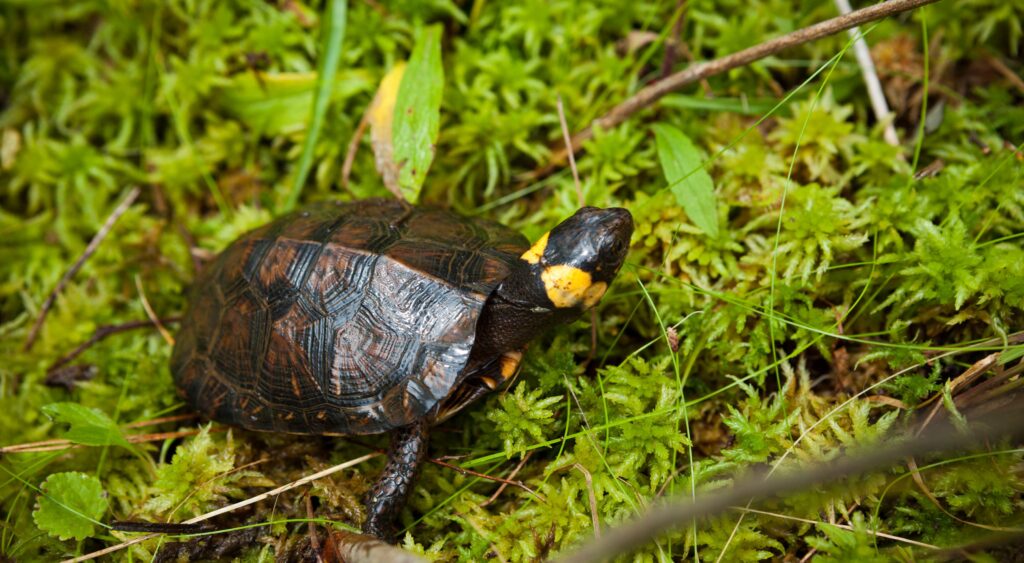
Largest Terrapin:
Indian Peacock Softshell Turtle (Nilssonia hurum): Some softshell turtles, like the Indian peacock softshell turtle, are sometimes referred to as terrapins. While not as large as some tortoises or sea turtles, they can have a carapace length of over 3 feet (91 cm).

World’s oldest tortoise?
The oldest known turtle is the Aldabra giant tortoise (Aldabrachelys gigantea). These tortoises are native to the Aldabra Atoll in Seychelles and are known for their impressive longevity. In particular, “Jonathan,” a Seychelles giant tortoise, is recognized as one of the oldest living land animals.
Jonathan was estimated to be over 190 years old. He was hatched around 1832 and has been living on the island of Saint Helena in the South Atlantic Ocean.
